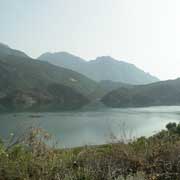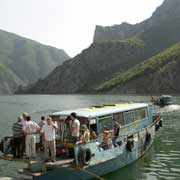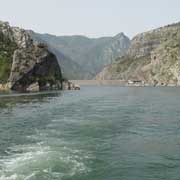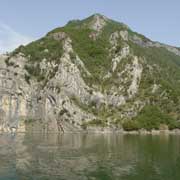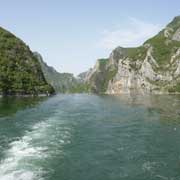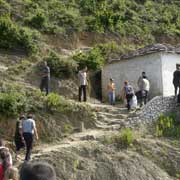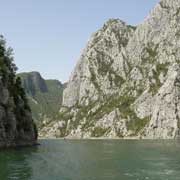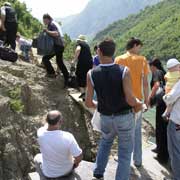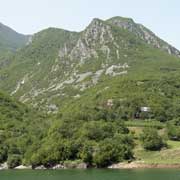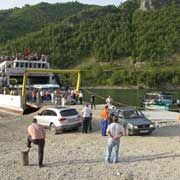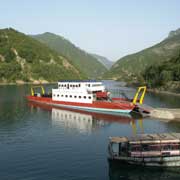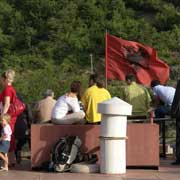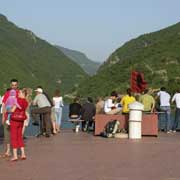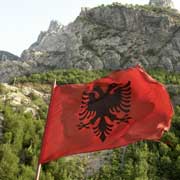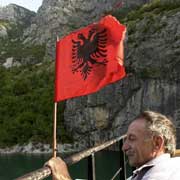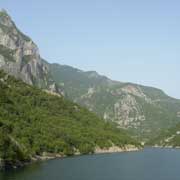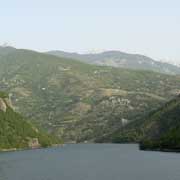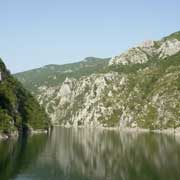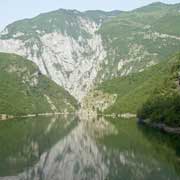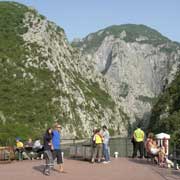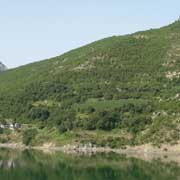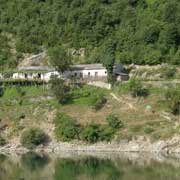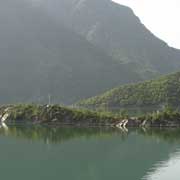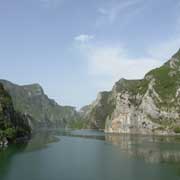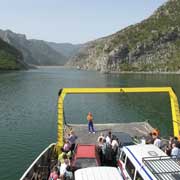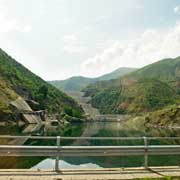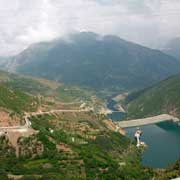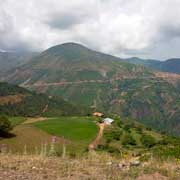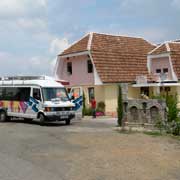Photos from Albania
Along northern Albania’s Lake Koman
There was no electric power in Albania until 1927, and ten years later, only ten towns had electricity. After World War II, the Communist regime constructed five dams on the Drin River in the country’s north to harness its considerable hydroelectric potential. Now the whole course of the river has been transformed, from Vau i Dejës just east of Shkodra to the junction of the White and Black Drin at Kukësi near the border with Kosovo.
you may then send it as a postcard if you wish.
A road runs from Shkodra, alongside Liqeni i Vaut të Dejës, an artificial lake created by a dam 18 kilometres from the city, to the massive Vau i Dejës dam, built between 1967 and 1971. The complex has four hydroelectric turbines, producing 600 Megawatts in an underground power station. The road leads through a 3 kilometres long tunnel and ends at the ferry station of Koman. From here, ferries run on Liqeni i Komanit, an artificial lake on the Drin river, to the village of Bregluma. The vessel can take about 20 cars and 100 passengers and takes about four hours to make the journey. There is also a small boat that takes only passengers, looking more like a bus, with the driver indeed steering it with a steering wheel. They can be dropped off at points along the river, from where they have to climb to their villages in the surrounding mountains. The journey from Koman to Bregluma is breathtakingly beautiful, passing through artificial lakes and deep gorges that remind of Norwegian fjords. Passengers are dropped at various villages along the way.
The village of Bregluma, about 15 kilometres south of Bajram Curri in Albania’s northeast, lies opposite the municipality of Fierzë, with a massive dam and power station. The “Light of the Party Power Station”, built during the Communist times, was opened in 1978. Behind it is the Fierzë Reservoir (Liqeni i Fierzës), a lake 70 kilometres long, stretching into Kosovo.



